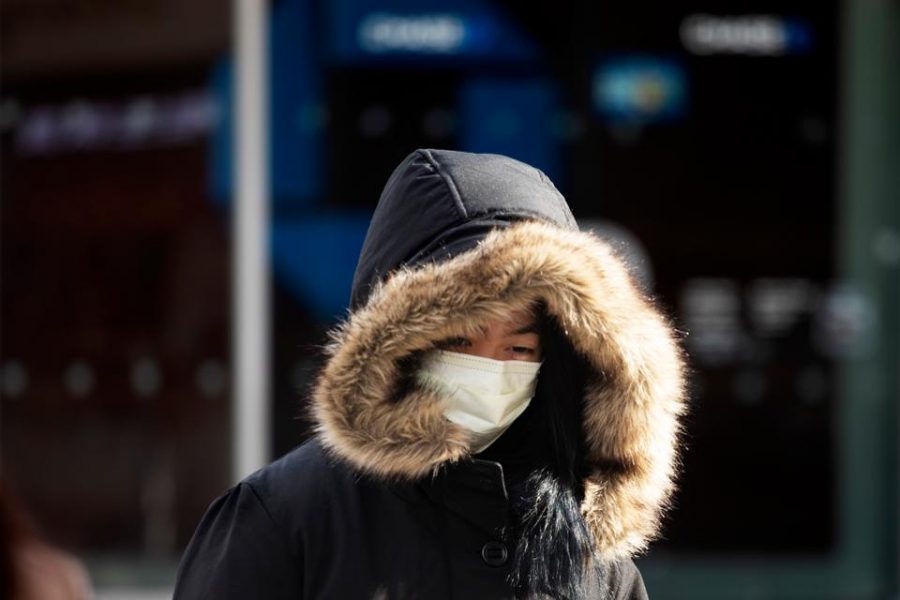Debunking the Myths of Coronavirus
February 11, 2020
Discussion of the coronavirus is everywhere: in the hallways, on the news, and on the internet. The slightest cough has caused people and schools to worry if they have a case of the relatively unknown virus. Similarly to the 2003 SARS outbreak, the coronavirus has been racialized. The vast majority of infections and deaths have come from China, resulting in harmful memes circulating the internet. On the meme and gif sharing site called 9gag, a user posted an image of a man with his tongue out, staring at a woman captioned with “he’s a coronavirus, and she’s Chinese eating bat soup.”Along with these so-called jokes has been a spread of false information regarding the disease that furthers existing stereotypes about Asians.
Much about coronavirus is still unknown. Those infected report symptoms of coughs, fever, and breathing difficulties. Currently, there are 43,099 reported cases and 1,018 deaths worldwide. A key difference between coronavirus and the flu is that there is no vaccine for the new coronavirus, making it more difficult for vulnerable members of the population such as elderly people and those with respiratory problems to protect themselves.
The cause of the disease is still unknown; however, thanks to tabloids such as Daily Mail, most believe that the cause is Chinese wet markets, places that sell dead and live animals out in the open. Yet the first three known cases from December 1st and 2nd were not linked to the market. Infectious disease specialist Daniel Lucey from Georgetown University says that since the virus has an incubation period of fourteen days, it’s possible humans were initially infected in November. As the virus appears as a cold, the first patient could have spread it to other individuals before health officials knew what to look for. The virus could have infected humans before arriving to the market.
Wet markets are not alone in their ability to help spread disease. Farming pigs and traveling internationally can play a key role in outbreaks. Overall, the origins of coronavirus is more complicated than a single source and scientists are still working to find why coronavirus infects people.
“WATCH: Chinese woman eats bat in the midst of coronavirus outbreak,” reads the headline of an article from The Post Millennial. While the article largely contains general information about coronavirus, the shocking title plants a seed in the reader’s mind linking the disease to Asian eating habits.
The video cited in the article was published in 2016 by Chinese influencer Weng Mengyun as a part of a travel show. The meal was also eaten in Palau, a Pacific island not in Wuhan, contrary to popular opinion. Many internet users have failed to do their research and slammed the video, citing Mengyun as the cause of coronavirus. The video was posted to YouTube and has over 7,000 comments including, “why not just eat pizza or pasta wtf is wrong with them” and “I’m not racist but this is why they get viruses. Because they eat things like this. Not all animals are edible.”
Associations of Asians with coronavirus perpetuate existing generalizations about Asian eating habits. Street food such as fish eye and pig feet is deemed perfectly normal in Asia, but is labeled as “disgusting” to Western palates since it differs from mainstream Western cuisine. If the targeting of Asians over coronavirus continues, these ideas about Asian hygiene will worsen.
According to The Los Angeles Times, “yellow peril”, the idea that Asian people were a threat to the white world, can be traced back to 19th century Europe. Policies in the United States were often created based on the idea that Asian people were disease-ridden. For example, Chinese migrants were subject to invasive medical inspections upon arriving at Angel Island that Europeans arriving through Ellis Island were not.
President Trump has also banned foreign nationals who have traveled to China in the last fourteen days from reentering the United States despite little scientific evidence that restricting travel stops the spread of a novel virus. Experts from CNN are weary the ban could backfire as it encourages individuals and governments to lie, makes it harder for health personnel to enter the country, and exacerbates stigmas of particular regions.
The media has played a large role in disseminating coronavirus news irresponsibly and creating sensational pieces about the virus. A 2019 study from Pew Research Center states that 55 percent of adults get their news from social media. It is unfortunate that fake news continues to plague these platforms.
Those in charge of these apps should do a better job with monitoring the content that is posted. However, with the precedent of Facebook refusing to fact-check political ads, the prospects for social media regulation appears bleak. So, it is up to the user to see beyond the clickbait titles and make sure they receive their news from reliable sources. If one prefers to get their news from social media, following accounts such as @nytimes and @washingtonpost on Instagram is a fine start.
Good online sources of information on the virus include MedlinePlus, the United Kingdom’s National Health Service, and the United State’s Food and Drug Administration. The Center for Disease Control and World Health Organization have also added a myth busters page for coronavirus. By education, one can correct others when harmful rumors begin to spread.
